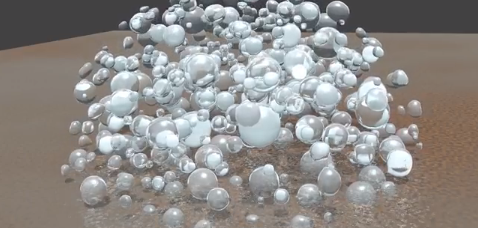Scientists at the ETH Zurich university and IBM Research, in collaboration with the Technical University of Munich and the Lawrence Livermore National Laboratory (LLNL), have set a new record in supercomputing in fluid dynamics using 6.4 million threads on LLNL’s 96 rack “Sequoia” IBM BlueGene/Q, one of the fastest supercomputers in the world.
The simulations resolved unique phenomena associated with clouds of collapsing bubbles which have several potential applications including improving the design of high pressure fuel injectors and propellers, shattering kidney stones using the high pressure of the collapsing bubbles, and emerging therapeutic modality for cancer treatment by using bursting bubbles to destroy tumorous cells and precise drug delivery, among other things.
The team of scientists performed the largest simulation ever in fluid dynamics by employing 13 Trillion cells and reaching an unprecedented, for flow simulations, 14.4 Petaflop sustained performance on Sequoia — 73 percent of the supercomputer’s theoretical peak.
The violent and short time scales of this process have made its quantitative understanding elusive for experimentalists and computational scientists. And while supercomputers have always been considered as a solution, the large scale flow simulations have not been effective on massively parallel architectures.
Petros Koumoutsakos (Director, Computational Science and Engineering Laboratory, ETH Zurich): In the last 10 years we have addressed a fundamental problem of computational science: the ever increasing gap of hardware capabilities and their effective utilization to solve engineering problems.
These simulations are one to two orders of magnitude faster than any previously reported flow simulation. The last major achievement was earlier this year by a team at Stanford University which broke the one million core barrier, also on Sequoia.
You can watch a video of the scientists bursting bubbles here:


